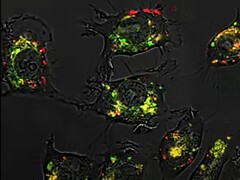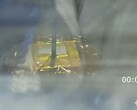Chemotherapy remains a standard treatment for many types of cancer, but it’s far from perfect. This approach relies on cytotoxins to kill rapidly dividing cells, yet it lacks precision. One of the most commonly used drugs, 5-fluorouracil (5-Fu), targets not only cancer cells but also healthy tissue, often causing severe side effects such as nausea, fatigue, or cardiac complications. Its poor solubility in bodily fluids further limits its effectiveness.
A team at Northwestern University led by Professor Chad A. Mirkin, Director of the International Institute for Nanotechnology, may have found a way to overcome these challenges. The researchers redesigned the molecular structure of the chemotherapy compound, reportedly making it up to 20,000 times more effective against leukemia cells in animal studies – without causing any observable side effects. Their findings were published on October 29 in ACS Nano.
The key: Spherical nucleic acids
The advanced compound is based on spherical nucleic acids (SNAs) – tiny nanostructures consisting of a particle core surrounded by tightly packed strands of DNA or RNA. In this design, the chemotherapy compound 5-Fu is chemically incorporated into the DNA shell. The concept is straightforward: cancer cells recognize and take up the spherical particles via specific surface receptors. Once inside, enzymes break down the DNA shell, releasing the drug precisely where it is needed. While this was the underlying theory, the recent results suggest that the approach indeed works in practice.
A short video from Northwestern University illustrates how the nanostructure enters a cancer cell and releases the drug from within:
In animal studies on acute myeloid leukemia (AML), the results appeared highly promising. The SNA-based treatment entered cancer cells about 12.5 times more efficiently and was reportedly up to 20,000 times more effective at killing them than the standard drug. Disease progression slowed by a factor of 59, and leukemia cells were almost completely cleared from the blood and spleen of treated animals. Meanwhile, healthy tissues and organs appeared to remain unaffected, with no observable side effects reported.
Clinical trials in humans planned
The researchers describe their work as an important development in structural nanomedicine – an emerging approach that leverages both the chemical composition and spatial design of drugs to more precisely control their behavior in the body. The findings may represent a significant step toward improving cancer treatment. Looking ahead, the same strategy could potentially be applied to address infections, neurodegenerative disorders, or autoimmune diseases.
Currently, seven SNA-based therapies are undergoing clinical trials. For the newly developed leukemia treatment, the next steps include more extensive animal studies, followed by clinical testing in humans. However, it will likely take several years before the drug is ready for the market.













